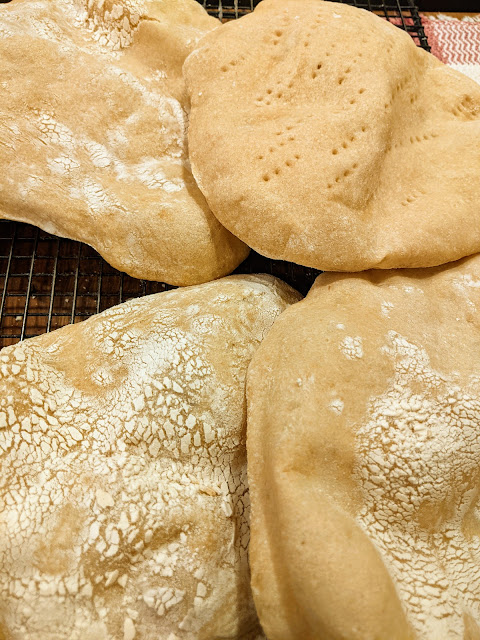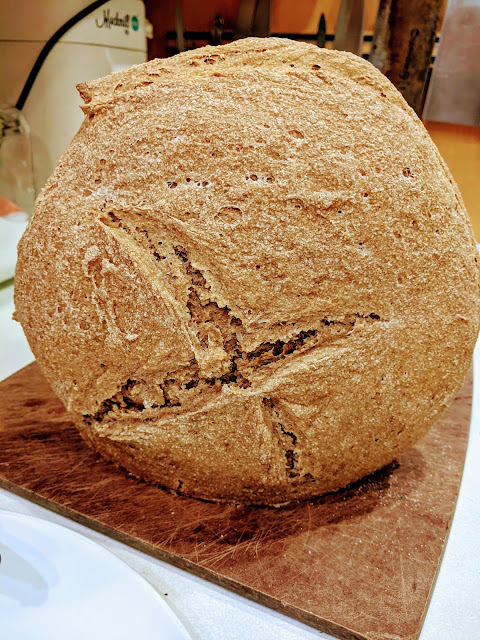Sourdough Kamut Demi-Baguettes

No question about it, Maurizio Leo's The Perfect Loaf contains my favorite collection of sourdough bread formulae. As this was Kamut week, I wanted to give his Kamut Demi-Baguettes a go. For long-time readers, this would ordinarily be Uncle Marty week when he would be making goose, and elegant beef, and several varieties of salmon, and I would be making breads for accompaniment, but of course it's Covid-2020, so no family gatherings until 2021. The bread begins with the creation of a very stiff levain containing the sourdough starter, which is then broken up and added to a mixture of several types of flour, about half of which is kamut. The stiff levain is squelched into the dough. The dough is kneaded by a method called French Slap and Fold producing a dough with extraordinary elasticity. The bald spots on top of my head are photoshopped in to enhance the look of the dough. I actually have a full head of hair. The baguettes are formed and rested on a linen couche for a fina






